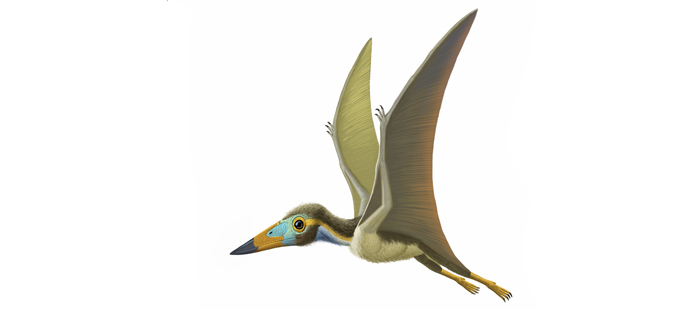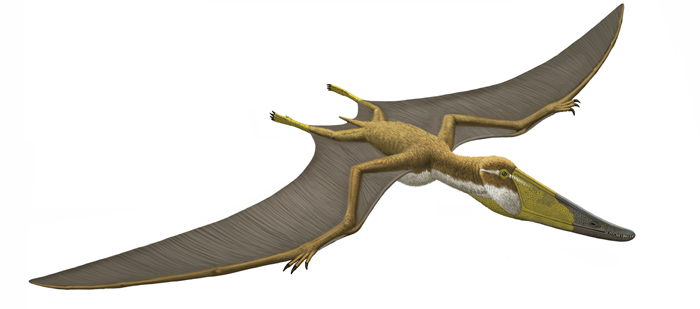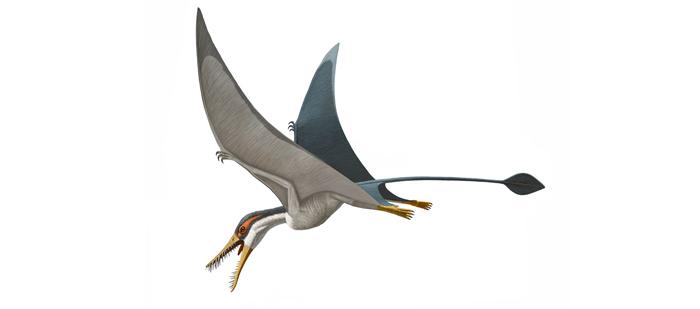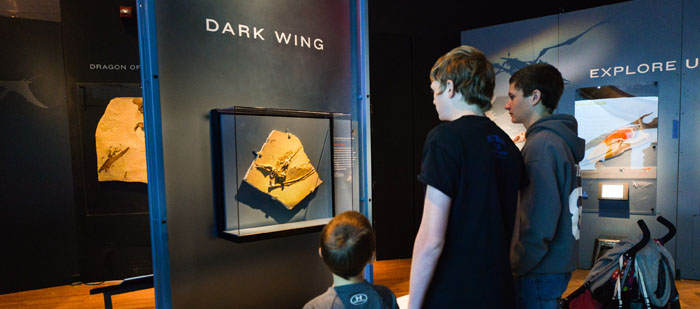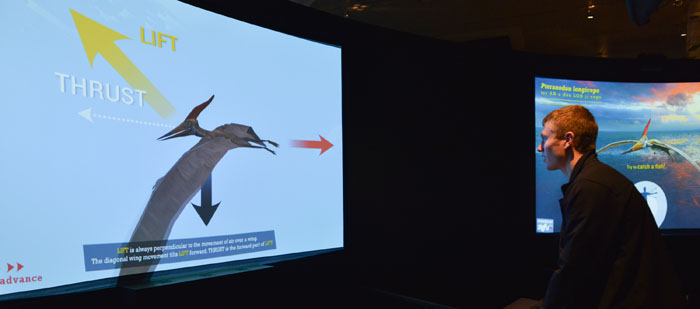
Flight allowed pterosaurs to travel long distances, exploit new habitats, escape predators, and swoop down from above to seize their prey. They spread across the world and branched out into an enormous array of species, including the largest animals ever to take wing.
BUILT TO FLY
Like other flying animals, pterosaurs generated lift with their wings. They needed to perform the same kinds of motions as birds and bats, but their wings evolved independently, developing their own distinct aerodynamic structure.
Pterosaurs flew with their forelimbs. Their long, tapering wings evolved from the same body part as our arms. As pterosaurs’ arm and hand bones evolved for flying, they lengthened, and the bones of one finger—the equivalent of our ring finger—became extraordinarily long. Like the mast on a ship, these bones supported the wing surface, a thin flap of skin that was shaped like a sail.
WING BONES
Although many animals can glide through the air, pterosaurs, birds, and bats are the only vertebrates that have evolved to fly by flapping their wings. All three groups descended from animals that lived on the ground, and their wings evolved in a similar way: their forelimbs gradually became long, bladelike, and aerodynamic.
Large pterosaurs needed strong limbs to get off the ground, but thick bones would have made them too heavy. The solution? A pterosaur’s wing bones were hollow tubes, with walls no thicker than a playing card. Like bird bones, they were flexible and lightweight, while strengthened by internal struts.
INSIDE THE WINGS
Recent discoveries show that pterosaur wing membranes were more than simple flaps of skin. Long fibers extended from the front to the back of the wings forming a series of stabilizing supports, so the membranes could be stretched taut, or folded up like a fan. Separate muscle fibers helped pterosaurs adjust the tension and shape of their wings, and veins and arteries kept the wings nourished with blood.
The exhibition includes a remarkable fossil of Rhamphorhynchus muensteri, discovered in Germany in 2001, which features wing tissues so well preserved that scientists have been able to see fine details in their structure. Under ultraviolet light, researchers detected layers of skin threaded with blood vessels, muscles, and long fibers that stiffened the wing. Because of the shadowy color of the wing membrane, paleontologists call this fossil Dark Wing.



